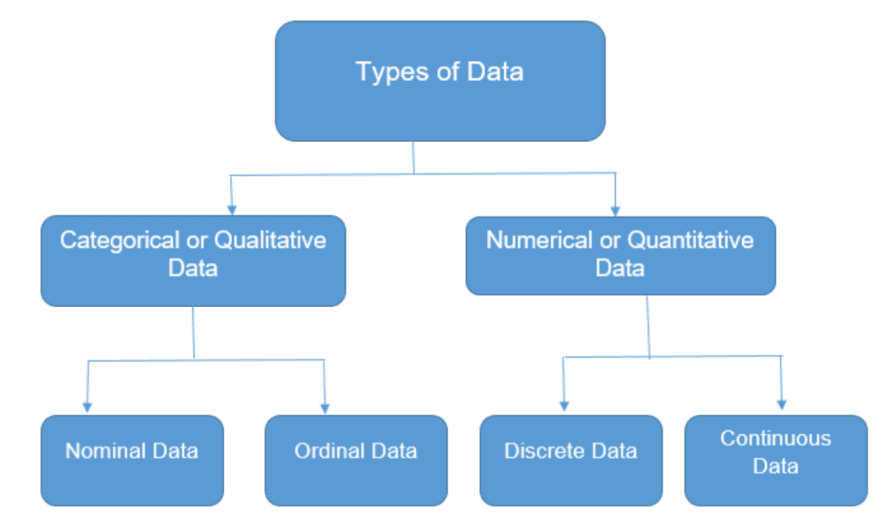Data Science is all about how well you understand your data. Knowing what type of data you have makes a lot of difference. By knowing your data type, you will be to apply necessary statistical measurements or you can conclude certain assumptions about the data.

1. Categorical data or qualitative data - data that can be divided into categories. Categorical data cannot be defined in numbers. Sometimes we use numbers to define categorical data, but that numbers cannot hold any value.
Ex: You have population data of a city divided into male and female categories, you have represented 1 for male and 0 for female. Here 1 & 0 are numbers but they hold any mathematical meaning.
i. Nominal data - categorical data that has no order or sequence
Ex: Gender, Race, language etc.,
ii. Ordinal data - this is an ordered series
Ex: Education (high school, college, graduate, PhD)
2. Numerical or quantitative data - data which represents numerical value
Ex: You have population data of a city and how much annual income and how many children every individual has. Number of children and annual income is considered as numerical data. It gives information about the quantity of a specific thing.
i. Discrete data - data that can be counted and not measured
Ex: Number of students in a class
ii. Continuous data - data that represents measurements
Ex: Temperature, heights of the students in a class
And just like different types of data, we have different ways to visualize the data:
a. Nominal data - pie chart, bar graphs
b. Ordinal data - stacked bar graph
c. Discrete data - bar graphs, scatter plots
d. Continuous data - box plot, histograms


Top comments (0)